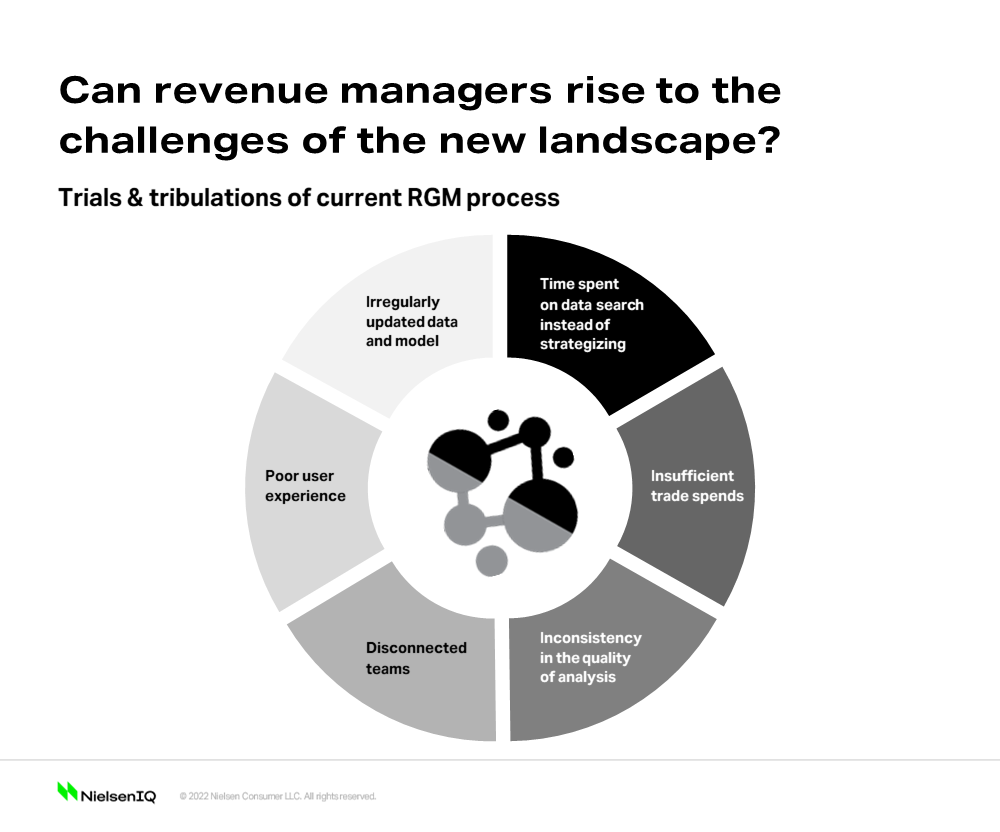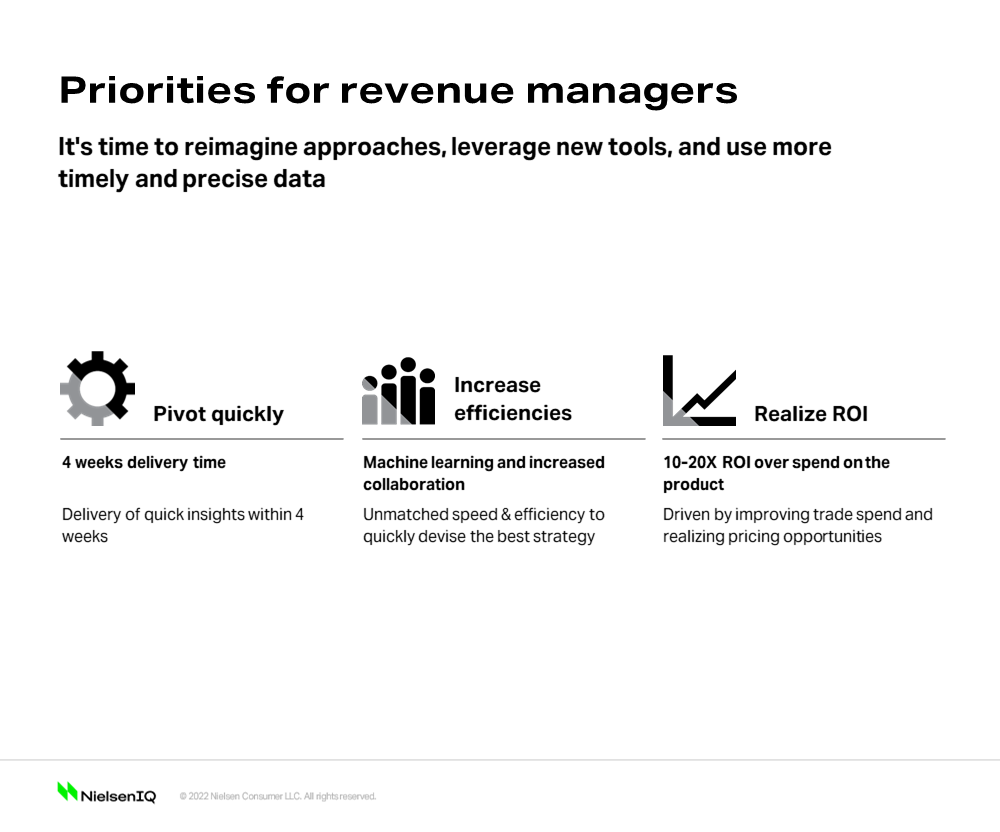Old ways hold you back from looking ahead
Revenue growth management (RGM) is no longer a once or twice a year process. The disruption in price and promotion by the pandemic serves as a reminder to those managing revenue of the importance of being able to review, remodel, or adjust strategies on an ongoing basis.
Revenue management teams typically spend a lot of time unearthing the right way to plan their upcoming trade plans and efficiently increase prices. It can get overwhelming, plowing through multiple data sources and several analytics or research work. Often these are overly complex in nature and prevent teams from strategizing—instead, they are drowned with work and waste time in creating multiple PowerPoint slides with numerous calculations.
Analytical tools to estimate elasticities frequently deliver poor user interface, which can be especially challenging in working with sales teams.
Some brands believe that they are better off developing their own tool internally so they can directly address the challenges that they are facing and customize a solution to fit their needs. This option can mean devoting more than one year to developing the solution and, more investment in dollars and in the workforce.
And, of course, there is no guarantee that the in-house tools will completely meet the company’s RGM needs.

Agility is key in revenue management
Now in the third year of the pandemic, consumers have adopted their own mindsets on how to live with Covid and all the disruptions that came with it. But does this mean that revenue management can revert to business as usual?
It can’t. The FMCG landscape has been completely changed and there will be continued polarization of consumer behavior and finances. To navigate it, there must be reimagined approaches, new tools, and more timely and precise data.
As revenue management teams are now formulating strategies and amassing the resources needed to confront the challenges presented by this fast-evolving FMCG environment, new priorities must be set.
Priorities for revenue managers
- Pivot quickly – To protect margins and effectively use trade spend in varying market scenarios, revenue managers should equip themselves with regularly refreshed data that reflects the latest market dynamics.
- Increase collaboration efficiencies – Today’s revenue managers should be empowered to strategically speak with leadership, sales, and account teams and strongly influence the company’s P&L using comprehensive and optimized data from a single source that all stakeholders can easily understand. This will inspire confidence and trust between the revenue team and senior executives because their decisions are backed by data, not by guesswork. Sales teams would appreciate simple and easy-to-understand language and flow.
- Realize ROI – In this vibrant time, it is more important than ever to focus on strategizing to reach and increase the company’s ROI targets. Simple and visual user experience will eliminate hours spent on research and converting insights to PowerPoint will allow revenue managers to have more time to strategize and improve upcoming trade strategies on the go — adding more impact to the company’s profit and loss sheet.

There is no room for do-it-yourself RGM solutions in this new and challenging business environment. To quickly see ROI, CPG brands must allocate resources towards executing strategy instead of building tools.
Today’s revenue management team can have revenue management in a box to meet the challenges of a new FMCG environment—if you act sooner rather than later.

Be ahead of the curve
Learn about how NielsenIQ Revenue Optimizer can support Revenue Management teams to succeed today and tomorrow.




